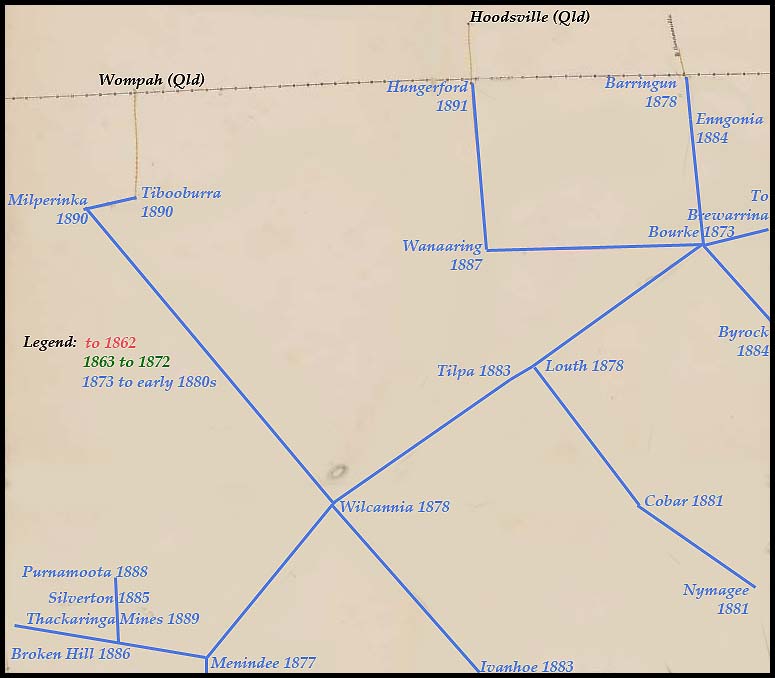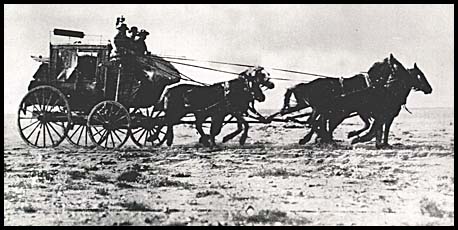Lines in the north-west region.
- Home, index, site details
- Australia 1901-1988
- New South Wales
- Overview of NSW
- Telegraph lines
- Telegraph Offices
- Date stamps
- Forms
- Envelopes
- Rates
- Stamps
- Queensland
- Overview of Qld
- Telegraph lines
- Telegraph offices
- Date stamps
- Forms
- Envelopes
- Rates
- Stamps
- South Australia
- Overview of SA
- Telegraph lines
- Telegraph Offices
- Date stamps
- Forms
- Envelopes
- Rates
- Stamps
- Tasmania
- Overview of Tasmania
- General developments
- Reports
- Organisation
- Telegraph lines
- Telegraph Offices
- Date stamps
- Railway lines
- Forms
- Envelopes
- Rates
- Stamps
- Overview of Tasmania
- Victoria
- Overview of Vic.
- Telegraph lines
- Telegraph offices
- Date stamps
- Forms
- Envelopes
- Rates
- Stamps
- Ephemera
- Western Australia
- Overview of WA
- Telegraph lines
- Telegraph Offices
- Date stamps
- Forms
- Envelopes
- Rates
- Stamps
The north-west region of New South Wales is defined in this site as being bounded by region west of Bourke and Cobar, the Queensland and South Australian borders and from Broken Hill to the north.
The map of the region below shows the main telegraph lines and the telegraph offices opened to about the mid-1880s. The lower part of the map joins to the north-west region at the Broken Hill region while the right of the map joins to region east of Bourke to the first telegraph line to Queensland.
The north-west region was, partly because of its geographical location, the end of the line for other developments. Hence all construction activity took place after 1872. It was however also a centre of attention because of the need to have back-up lines for the other routes including those to Queensland. There was also an increasing demand for those involved in a variety of primary industries and in mining.
The first lines came to Bourke from the extension of the Walgett-Brewarrina line in 1873. There was then a four year break before construction activities resumed in this difficult region.
 |
The first new line extended the telegraph from Menindee near the South Australian border through Wilcannia and Louth to Bourke. All four of these towns are on the banks of the Darling River and hence the telegraph line was used to communicate about the movement of paddle-steamers and other craft as well as about trade.
Menindee is about 110 km south-east from the Broken Hill area. In 1867, a rumour was started about a gold find at Thackaringa. Not very much happened. In 1877, a rich silver lode was discovered but the assay sample went missing en route to England. By 1880, prospectors began to explore the area west of Menindee. To the north, Silverton was established in 1885 and the telegraph line was extended immediately from Menindee. The Silverton Telegraph Office was opened in August 1885. The town of Broken Hill was established in 1883 with the telegraph office opening on 2 August 1886 - nearly two week before the Post Office! A Telegraph Office at Thackaringa Mines was opened in 1889.
Another major additional line ran from Wilcannia to the north-west corner of the Colony. Two telegraph offices were opened in that region:
The probable motivation to construct this line was the discovery of gold in the two places in the late 1880s. Although few prospectors were attracted to seek their fortune in the region, it has been said that gold could be seen in the street after heavy rain. With an average monthly rainfall of about 20 mm, such discoveries were probably infrequent. |
 Cobb & Co Coach on the Broken Hill to Tibooburra road about 1910. |
The line from Louth through Cobar to Nymagee in 1881 was constructed to service the major copper deposits around both places. The Great Cobar Copper Mining Company Limited was established in 1878 and many other companies began operations subsequently - including the extensive development of light rail. For some years, Cobar also had its own Stock Exchange. Hence telegraphic communications were required for a wide range of activities.
Lines were constructed to Barringun and Enngonia probably because of the large labour-intensive properties in the area. By the early 1900s, improved farming methods had reduced the population significantly. Barringun is acknowledged as being in New South Wales. In 1894, Barringun was described in the Australian Handbook as:
'A border township with post, telegraph, money order station and Government Savings Bank ... Mode of conveyance: per coach to Bourke 90 miles thence per rail. There are two hotels and a customs station on the Queensland side of the border. The buildings on the New South Wales side comprise a bonded warehouse, post and telegraph offices, two hotels (Royal Mail and Queensland), a branch of the Commercial Bank, a brewery, two butcher's shops, a few private cottages, a court house and gaol and a public school. Average attendance - 30. Population about 180.'
Now, in the 21st century, the town has one pub and a population of four. Those who know these things claim that it is quite common in the late afternoon to see half the town's population - the publican and one customer - at the pub!!!
The situation at Hungerford is a little different. Certainly the town's biggest claim to fame is the story written about it by Henry Lawson. In part of his 1892-93 story about his "long walk", Lawson described Hungerford as follows:
"The town is right on the Queensland border and an inter-provincial rabbit-proof fence -- with rabbits on both sides of it -- runs across the main street. ... Hungerford consists of two houses and a humpy in New South Wales, and five houses in Queensland. Characteristically enough, both the pubs are in Queensland. We got a glass of sour yeast at one and paid six pence for it -- we had asked for English ale".
Hungerford and its Post and Telegraph Office must be regarded as being one of those places 'which kept on keeping on'.
Originally the town was regarded as being in New South Wales but it was later found to be in Queensland. The Post Office opened on 7 April 1870 as Currawinga but changed its name to Hoodsville on 1 August of the same year. It closed on 15 June 1875 but reopened as Hungerford's on 1 January 1876. It closed again on 15 July 1876 only to reopen again one month later. |
 The Royal Mail Hotel which had been the Cobb & Co. depot from 1875. Source: Wikipedia. |
On 1 October 1880, responsibility for Hungerford's operation was transferred to Queensland only to be returned to NSW control on 1 October 1881. The Post Office was upgraded to a Post and Telegraph Office on 7 May 1891. After another good 10 year run, the combined office was destroyed by fire on 8 August 1901. Cobb & Co. stopped their service to Hungerford in 1904. After re-opening the Post Office in 1906, the operation was finally transferred back to Queensland on 24 February 1941. |
|